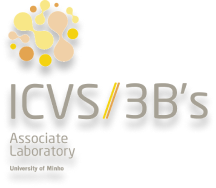
Basic mechanisms of degeneration/regeneration
This project dedicates to fundamental research to understand the molecular mechanisms underlying Parkinson’s Disease (PD) and Spinal Cord Injury (SCI) pathophysiology.
In the context of PD, we focus on addressing how the locus coeruleus (LC), a major noradrenergic nucleus from the CNS, is affected during disease progression. For that, we have established an integrative project, from clinical to basic research to assess LC degeneration on prodromal and clinical PD patients and develop patient-derived LC noradrenergic neurons using iPSCs. In parallel, we are also dedicated to the development of innovative in vitro models (2D and 3D) of other vulnerable neuronal populations in PD.
For SCI, we are using a combination of in vitro and surgical in vivo models (transgenic and wild-type rodent models of traumatic SCI) to 1) Characterize the temporal dynamics of SCI pathophysiology, focusing on secondary events (e.g. inflammation, excitotoxicity, glial scar formation) to identify potential therapeutic targets and windows of opportunity and to 2) modulate neuroimmune regulatory pathways (e.g. thermoablation of the spinal- spleen sympathetic circuit) to shape immune cells behaviour to improve endogenous tissue repair. The most promising preclinical targets/strategies will be validated on SCI patients’ cohorts.
Going from preclinical models to patients, this project has not only the potential to generate innovative knowledge on the mechanisms underlying PD and SCI degeneration, but also to provide tools and targets for the applied research projects from our team, supporting the success of innovative regenerative medicine strategies.
Finally, a strong focus is also put in understanding the basics mechanism as well as, possible therapeutic routes of cerebral Malaria. Malaria remains a significant contributor to global human mortality, and roughly, half the world’s population is at risk for infection with Plasmodium spp. parasites causing the raise on the demand for the development of antimalarial drugs. In 2018, we launched a project to establish a new high-throughput antimalarial screening platform, funded by FCT, PTDC/SAU-PAR/28066/2017- “MalPharm – A genetic sensors-based high-throughput screening platform for antimalarial development”. During the course of this project, we were able to identify a novel class of drugs with potent antimalarial activity (low-nanomolar level) named: purydrazides. Purydrazides are purine derivatives, which can act in both resistant and sensitive P. falciparum cell lines. Through deep characterization of its mechanisms of action and resistance at the parasitological level and in vivo characterization of its toxicity and antimalarial action, we aim to identify novel drugabble targets in P. falciparum with a capacity to delay drug resistance development.
Funding Agency
FCT
Clinical Academic Center of Braga (2CA-Braga)
Project Reference
PTDC/SAU-PAR/2766/2021
EXPL/MED-PAT/0931/2021
Project Members


António J. Salgado

Nuno A. Silva

Pedro E. Ferreira

Nídia de Sousa

Miguel F Gago

Nuno Jorge Lamas

Sofia G. Meirinho

Ana Marote

Andreia G. Pinho

Jonas Campos

José Lentilhas-Graça

Carlos Vedor

Filipa Antunes
Main Project Outcomes
S. Queirós, “Right ventricular segmentation in multi-view cardiac MRI using a unified U-net model”, in E. Puyol Antón et al. (eds) Statistical Atlases and Computational Models of the Heart. Multi-Disease, Multi-View, and Multi-Center Right Ventricular Segmentation in Cardiac MRI Challenge. STACOM 2021. Lecture Notes in Computer Science, vol 13131, pp. 287-295, Springer, Cham, 2022.
“Best Paper Award in the M&Ms-2 Challenge”, by M&Ms2 Challenge organizers and the Medical Image Computing and Computer Assisted Intervention (MICCAI) Society.
Main Project Outcomes
Marote, A., et al. (2018). “Generation of an induced pluripotent stem cell line (CSC-44) from a Parkinson’s disease patient carrying a compound heterozygous mutation (c.823C > T and EX6 del) in the PARK2 gene.” Stem Cell Res 27: 90-94.
Marote, A., et al. (2018). “Generation of an integration-free induced pluripotent stem cell line (CSC-43J) from a patient with sporadic Parkinson’s disease.” Stem Cell Res 27: 82-85.
Marote, A., et al. (2018). “Generation of an induced pluripotent stem cell line (CSC-41) from a Parkinson’s disease patient carrying a p.G2019S mutation in the LRRK2 gene.” Stem Cell Res 28: 44-47.
Monteiro S; Salgado AJ; Silva NA (2018) “Immunomodulation as a neuroprotective strategy after spinal cord injury”. Neural Regeneration Research 13 (3): 423-423.
Monteiro S, Pinho AG, Macieira M, et al. (2020) Splenic sympathetic signaling contributes for acute neutrophil’s infiltration of the injured spinal cord. J Neuroinflammation Sep 23;17(1)
Café com Ciência – Projeto SymPATH (Susana Monteiro) https://www.youtube.com/watch?v=cy3MsXS5wac



Contact us
Phone: +351 253 604 967
Fax: +351 253 604 809
Email: icvs.sec@med.uminho.pt
Address
Life and Health Sciences
Research Institute (ICVS)
School of Medicine,
University of Minho,
Campus de Gualtar
4710-057 Braga
Portugal

Copyright ©2022 ICVS. All Rights Reserved



Copyright ©2022 ICVS. All Rights Reserved
Address
Life and Health Sciences
Research Institute (ICVS)
School of Medicine,
University of Minho,
Campus de Gualtar
4710-057 Braga
Portugal



Copyright ©2022 ICVS. All Rights Reserved
Address
Life and Health Sciences
Research Institute (ICVS)
School of Medicine,
University of Minho,
Campus de Gualtar
4710-057 Braga
Portugal

